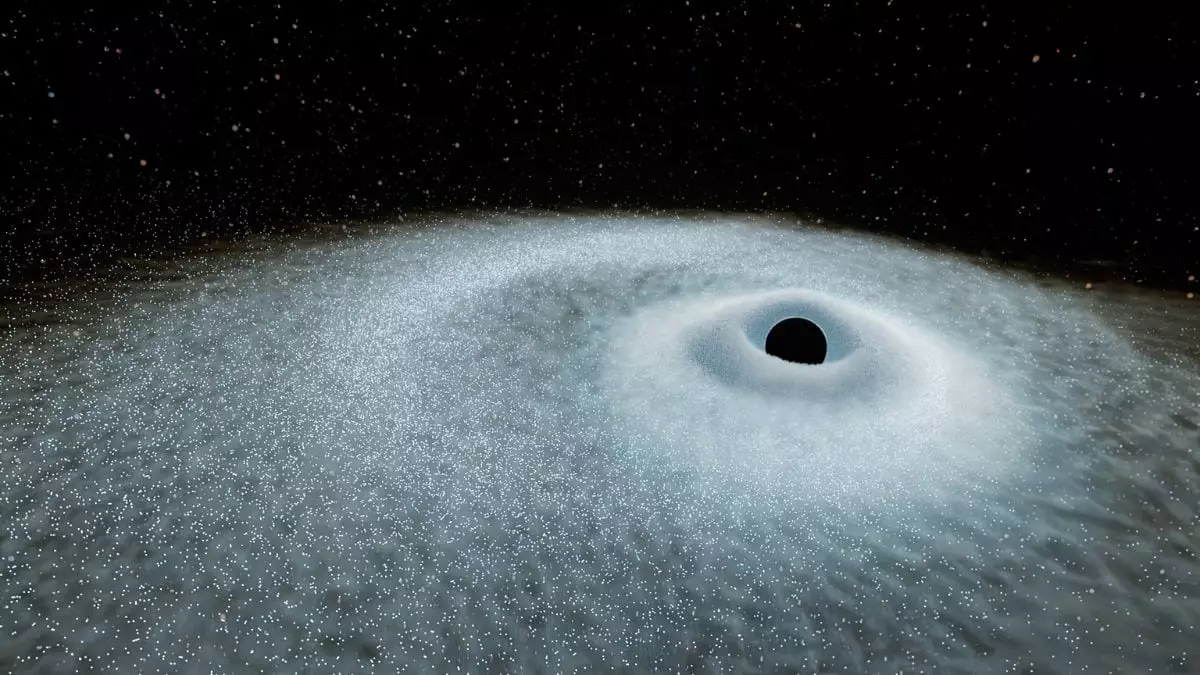In the depths of space, where the very fabric of the universe is torn asunder, astronomers have stumbled upon an exhilarating phenomenon that challenges our understanding of cosmic events. These phenomena, known as extreme nuclear transients (ENTs), ignite the imagination with their sheer ferocity. Occurring when massive stars—three times the size of our Sun—are devoured by supermassive black holes, ENTs represent a thrilling chapter in the cosmic narrative. Unlike conventional tidal disruption events that have long fascinated astrophysicists, these titanic explosions unleash energy levels that are staggering, radiant enough to dwarf even the most spectacular supernovae.
Brighter than Ever: A New Class of Catastrophes
The recent discovery of ENTs has provoked wonder and intrigue among scientists. Recent data, highlighted in a June 4 report published in *Science Advances*, details how researchers, under the guidance of Jason Hinkle from the University of Hawaii, identified these celestial fireworks through observations made by the European Space Agency’s Gaia spacecraft. The flares recorded in 2016 and 2018 exhibited a brilliance that was nearly tenfold greater than typical cosmic explosions. A subsequent flare recorded in 2020 by the Zwicky Transient Facility provided further evidence of their unique characteristics.
Such explosive events are not merely fleeting flashes in the dark; they linger, achieving an extraordinary longevity that defies the brief lifespan typical of similar phenomena. The implications are monumental—this newfound understanding may propel a paradigm shift in how we perceive the intricate dance between black holes and the stars that feed them.
Cosmic Insight: Understanding Black Hole Behavior
The luminous glow of ENTs serves as a beacon piercing through the complexities of our universe’s history, shedding light on the feeding behaviors of black holes during the early cosmic epochs. With an intensity more than 100 times that of supernovae and energy release over millions to billions of years, ENTs provide astronomers with an unprecedented observational tool for understanding the formation and evolution of supermassive black holes.
Benjamin Shappee, a co-author of the research and Hubble Fellow at the Institute for Astronomy, remarks that these flares not only illuminate the past but potentially chart a course for future investigations into dark matter dynamics and energy propagation across galaxies. ENTs are fundamentally reshaping the landscape of astrophysical inquiry.
A Plea for Attention: The Need for Further Exploration
However, despite this exciting advancement, the auditors of the cosmos urge caution. While the research thus far has expanded our theoretical frameworks, researchers remain acutely aware that much remains unexplored. With missions on the horizon equipped with more advanced instruments, the astronomical community stands on the precipice of further discoveries. There is an implicit call to action within the scientific community; the exploration of ENTs should escalate, as understanding these rare events may reveal significant insights into the mechanics of the universe.
In this bold era of cosmic discovery, the importance of deducing the underlying principles governing black holes and ENTs cannot be overstated. The possibility of future ENTs illuminating the dark recesses of space offers tantalizing prospects that hold promise not just for researchers, but for humanity’s broader thirst for understanding our place in the cosmos.

Leave a Reply